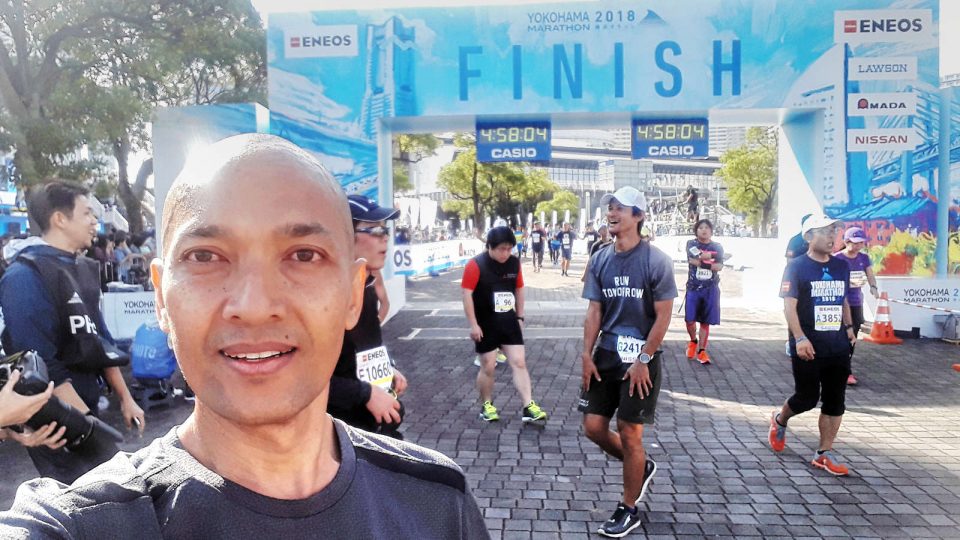Through my observations, the Singapore running segment is constantly growing and evolving. As runners complete all the local running routes, they start to get bored and look for new challenges abroad. And as certain overseas races become popular and are commercialised into sports tourism, trendsetting runners would explore to run at less known races overseas.
This has been my personal running mindset too. When I did the Tokyo Marathon back in 2008, it was still not under the World Marathon Majors series yet. There were no organised running tours, and I ventured there with three other like-minded local runners whom we got to know from the online forum running board.
Even then, the 30,000-capacity event had a ballot success probability of 1/8, with relatively low numbers of international runners. Fast forward ten years and this probability have shrunk to about 1/15, as the popularity of this event grew tremendously.
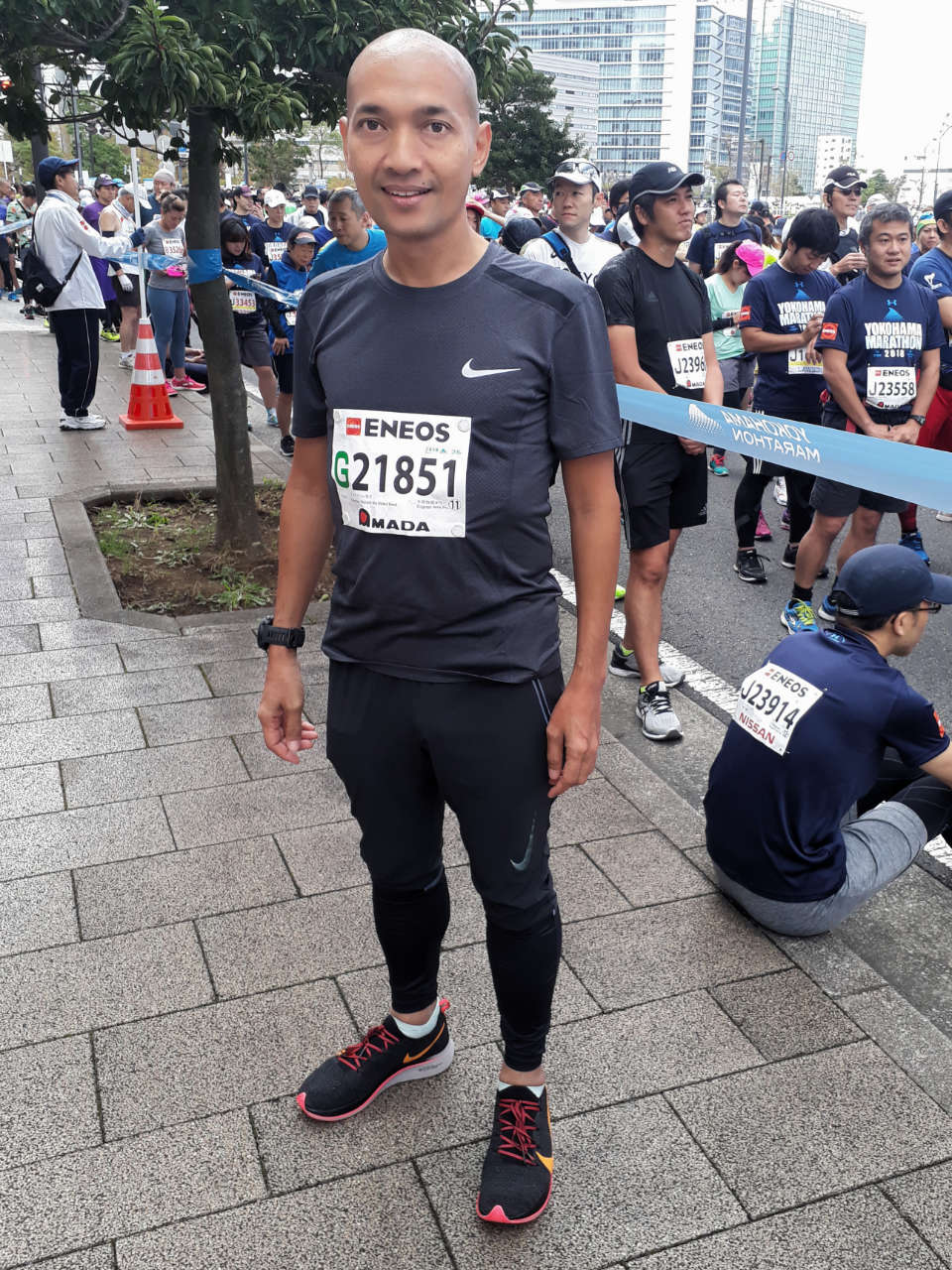
So, at last weekend’s Yokohama Marathon, it was a case of déjà vu for me. 28,000 registered runners – and I am guessing with probably around 80% competing for the full distance based on previous years’ figures, and only a quota of 270 international runners – was exactly the type of race I would want to be in. Yes, I love big international marathons with all the frills and glamour, but I also cherish local races that stay true to engaging its grassroots communities.
The only anxiety I had on pre-race Saturday was that the Yokohama Marathon was called off in 2017 on the eve of the race due to heavy thunderstorms. With the event being so local and most information are in the Japanese language, I could not gather much information about this event’s history.
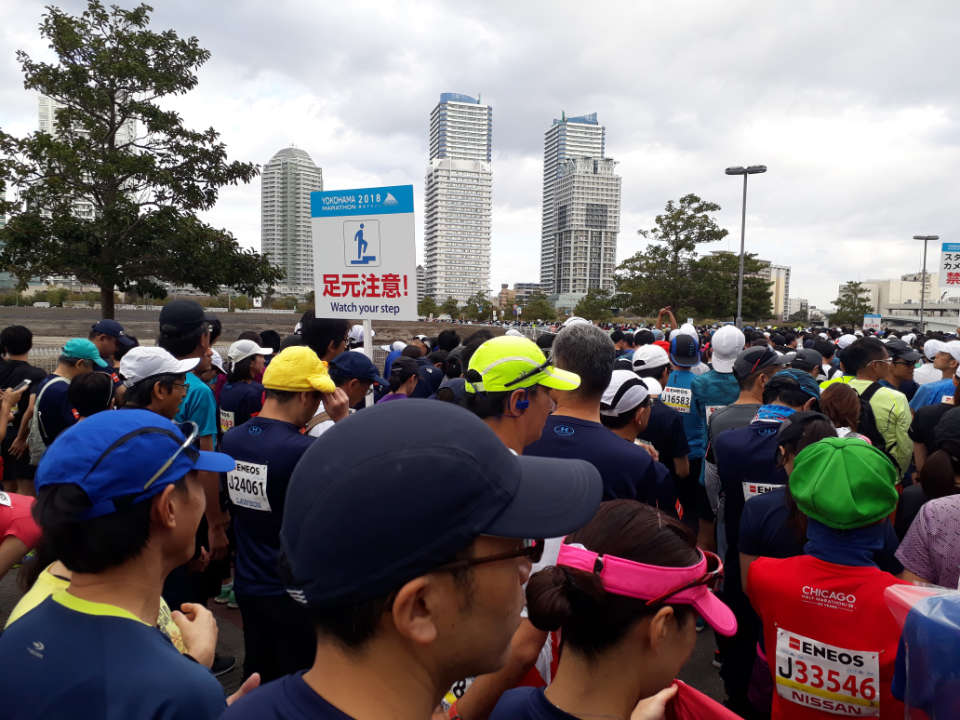
Making The Preparations
This has been a massive running year-to-date. I take part in overseas races regularly but run ever so slowly. I had clocked full distance marathons in Hong Kong in February, Kuala Lumpur in April, Ultra Trail Australia 100km in May, Gold Coast Marathon in July, and OCC-Ultra Trail Mont Blanc at end of August, and not counting the shorter distance preparatory races in between. The Yokohama Marathon would be – I think – my final road marathon for 2018.
So, I gave myself some latitude to experiment with the training methodology. As I am absolutely not in any potential podium position, it is with great pleasure and zero stress that I tried to break the training rules, with the sole objective to review if I would finish strong for this marathon.
Typically, a full-course preparation would entail a structured 16-week training program that the various types of runs – long and slow, tempo, and intervals, among others. I had instead embarked on an 8-week experiment that included frequent and relatively high-intensity short runs that peak at 10km and plyometric exercises.
As a caveat, my base training is already quite sound, and this experiment is in no way formally structured, so I would not recommend you try to break the rules unless you are a seasoned runner and knows how your body reacts to the different training regimes.
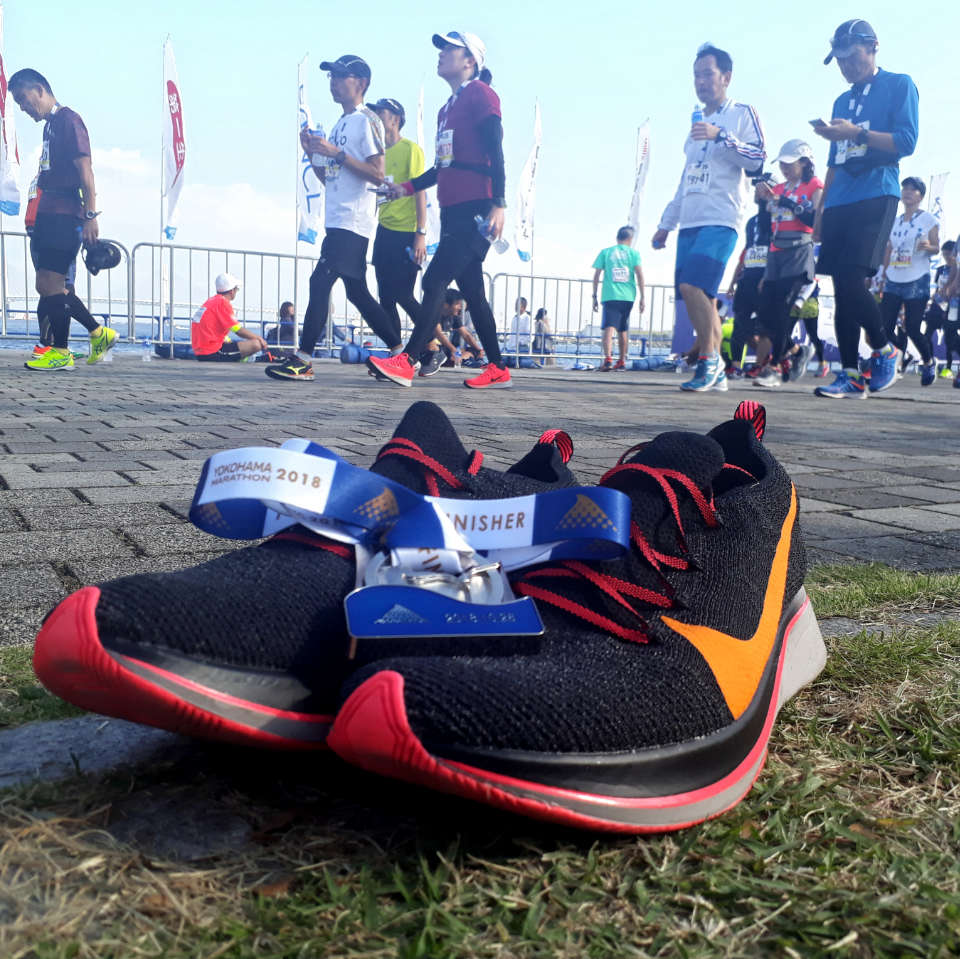
Additionally, to prepare for cold and wet weather conditions, Nike South East Asia had kindly provided me with the cold weather apparel and the new Zoom Fly Flyknit racing shoes for use and review. These will be covered in the separate story shortly.
Travelling wise, the plan was to arrive on eve of race morning, collect the race pack and get a hotel that is near to the start point.
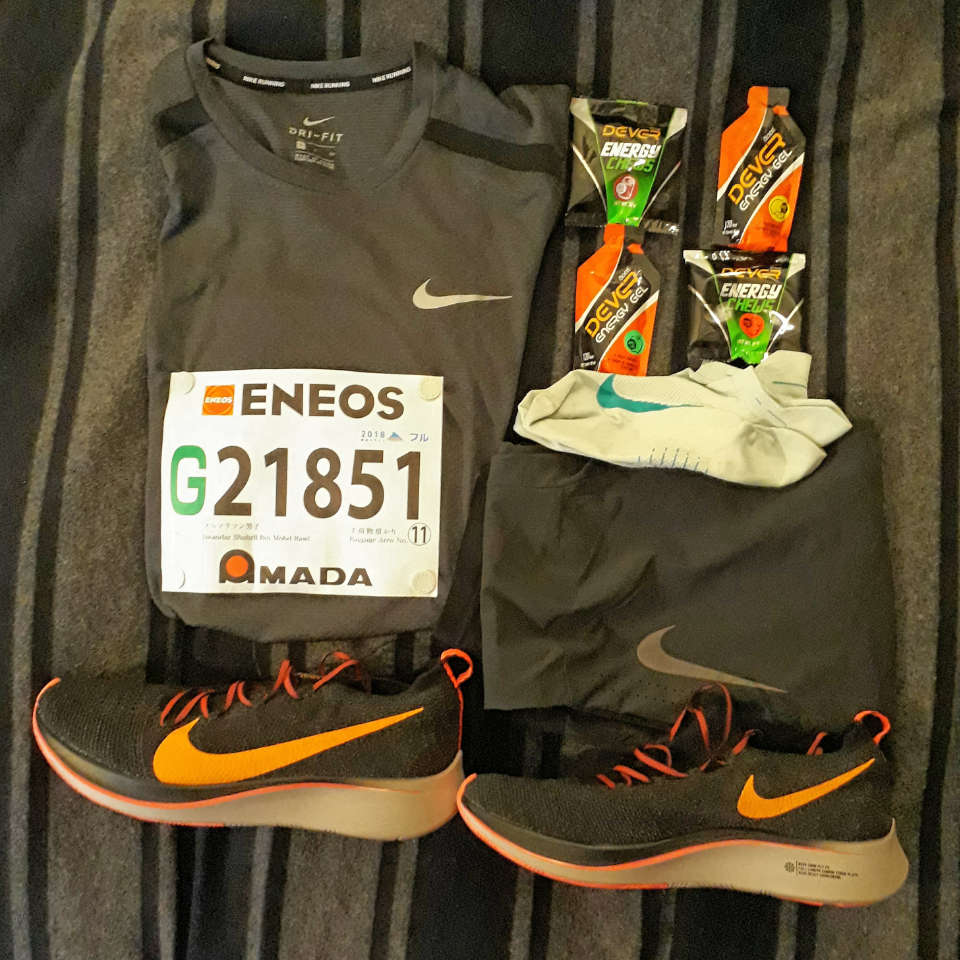
My Yokohama Marathon Experience
The adventure started early on, prior to my arrival at Narita airport in Tokyo. I was on a transit flight, and due to the flight delay, the transit duration was an awfully short 45 minutes. I had been in such situations previously where I was able to continue to my onward journey, only for my checked in baggage to arrive on the following flight.
In this case, should Murphy’s Law takes over, that would have meant me completely not getting my running gear on time for race day! Fortunately, all went well but it is a learning for me to ensure my necessary gear would be in my carry-on baggage next time around.
Race pack collection was held at the Red Brick Warehouse in Yokohama. Everything was orderly, so it was such a breeze. An event tee was included as part of the entitlement. The race expo had lots of entertainment. Very Japanese, as evident from the signboards in local language only.
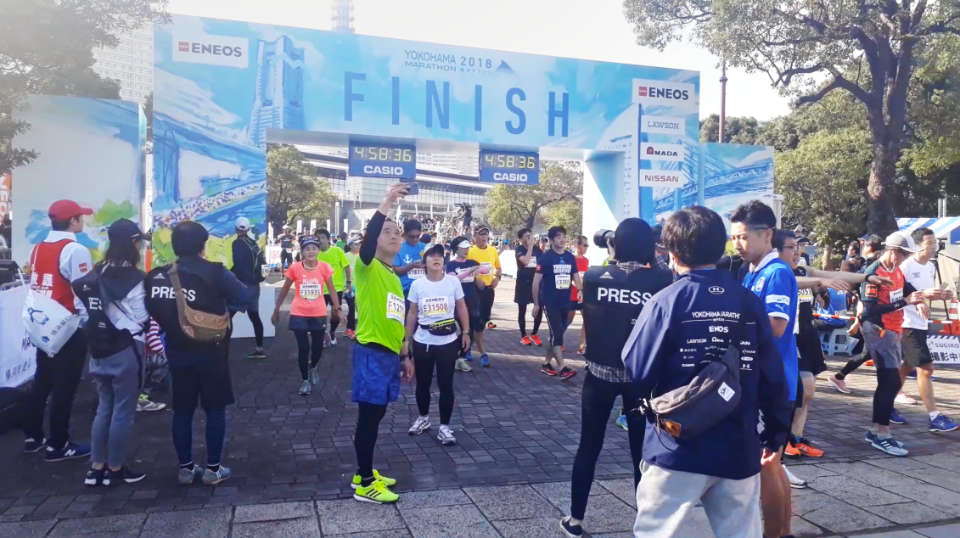
This was also the site for the endpoint, which is different from the start point. I am not a fan of different start and end locations as it would mess up the planning for baggage deposit on race morning; too much back and forth prior to the actual race. In this case, I decided not to deposit my baggage and risk the cold in the event of bad weather at the end of the race.
Race day start was eventful. It started at Minato Mirai Ohashi Bridge, an icon with a waterfront surrounded by big corporate offices. My relatively short walk to the start area took a good 1.5km to get to my start pen, and perhaps another good kilometre to get to the actual start point. It was a bit of walking down the memory lane as I had to pass through Nissan’s global headquarters, an office I had frequented many years ago when I used to be employed by the brand.
It took more than half hour waiting at my allocated start pen, and another 20 mins before I actually started my race. Fortunately, the temperature was hovering just a tad below 20 deg C, and the wind chill factor was bearable. In colder circumstances, runners would typically wrap themselves with ponchos or bags to block the wind and then dispose of these items just prior to the start point.
It was evident from the start that this was very much a local race. Most signages are in Japanese text only, assisted with easy-to-understand symbols. Standards-wise though, it is truly international, easily surpassing safety and hospitality standards of major runs in Asia.
For example, gaps on the roads were taped up, there was proper food hygiene with gloves and face masks used, and every water point was accompanied by local entertainment. The sincerity was shown with their every willing, smiling face.
The course itself was relative, except between 20km to 32km stretch on the elevated highway. This part also had road camber, so it needed some getting used to. The first 10km was crowded, and it was difficult for me to find a good running rhythm, akin to the congestion at last year’s Standard Chartered Singapore Marathon.
While the original forecast was mid-teens deg C, the temperature rose to about 27 deg C midway through my race and soared as high as 30 deg C when I completed it. I was wearing Nike’s Dri-Fit Rise 365 top and Phenom long bottom, which seemed the appropriate choice at the start of the race. Locals were also similarly dressed, but these got a bit hot towards the end.
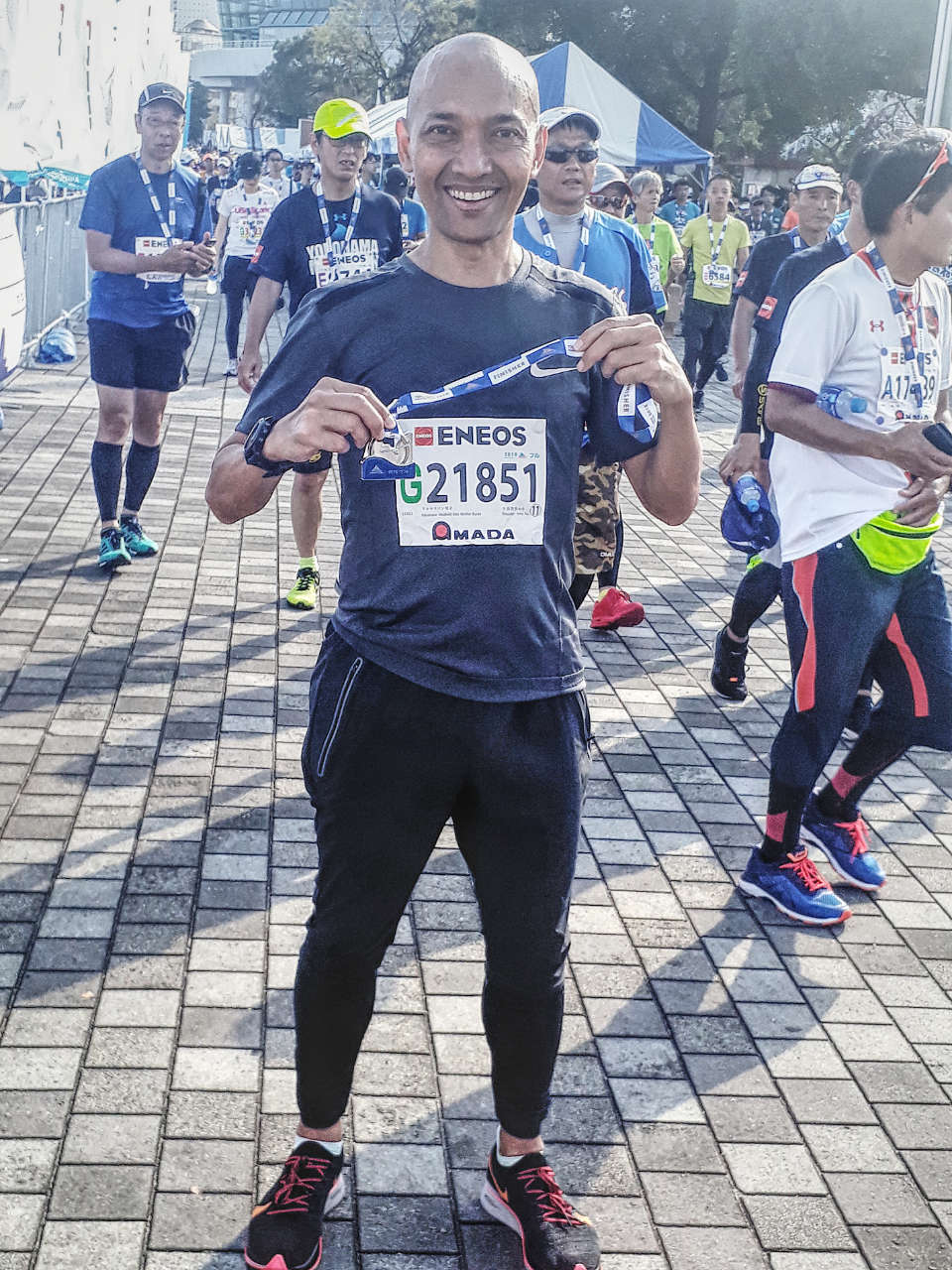
In terms of shoes, Nike Zoom Fly Flyknit was a new experience for me, with its full-length carbon fibre plate in the soles. I had broken in about 20km prior to this race. These racing shoes felt good, and the stiff plate provided the bounce I needed.
I ended my race at 4:28 hrs, with stops at each water point for photo taking and soaking in the festive atmosphere.
While Japan has the more internationally popular Tokyo and Osaka marathons, this Yokohama Marathon could be an option if you have completed the others and am looking for new race destinations, or you have not been lucky with the ballot selection process. The 2019 edition is scheduled on 10 Nov, so get started on your plans.



